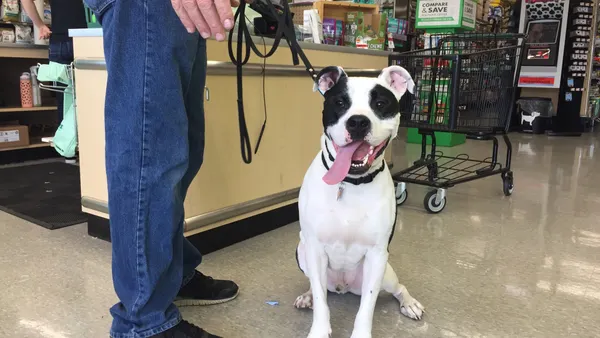Dive Brief:
- Best Buy is testing new store formats at four locations in Minneapolis as a proof of concept for stores as fulfillment hubs. The remodels limit SKU assortment on the floor to the most popular items and reduce shoppable area nearly by half, allowing space for pickup and ship from store, CEO Corie Barry said on the retailer's Q3 earnings call Tuesday.
- The retailer will add 90 ship-from-store hubs during the holiday season, supplementing the 250 ship-from-store locations Best Buy piloted in September. Barry said she expects the 340 locations to ship more than 70% of ship-from-store orders in Q4.
- Ship-to-home speeds in October were the fastest since the pandemic began, according to Barry, although she did not provide a specific figure. The retailer plans to set up 450 stores from which Best Buy employees can deliver to consumers, Barry said.
Dive Insight:
Store-centric fulfillment, once associated primarily with Target, is now a mainstay of retail earnings calls.
Barry laid out a "hypothesis of stores as more primary fulfillment hubs" as the basis for the store format testing in Minneapolis. She acknowledged the tests are in early stages and on a small scale. "We're learning," she said.
The fulfillment testing comes at an unlikely time for Best Buy. "Normally, we would not remodel any stores this close to the holiday season, but we feel it’s imperative to move quickly to gain the learnings about how the store format may complement our omnichannel strategy," Barry said.
The pandemic hit fast forward on retailers' omnichannel strategies, with retailers setting up curbside pickup and ship from store in a matter of days. But the omnichannel platforms didn't materialize from thin air. The key to making it happen was a pre-existing foundation of inventory visibility and fulfillment management across channels.
Barry credited pre-pandemic groundwork and the "foresight to invest in these omnichannel experiences" for the retailer's ability to accelerate its digital channel strategies. Establishing the 340 ship-from-store hubs required little capital investment, because the technology was already in place and the locations chosen were close to carrier partners, she said.
Ship from store has picked up steam during the pandemic, initially to move inventory trapped in closed stores. But analysts question the longevity of the fulfillment method, given its higher costs compared to pickup.
"Ship from store is an accommodation, but it's not a profitable one," Michael Brown, partner at Kearney, told sister publication Supply Chain Dive this month.
Best Buy's domestic gross profit rate dropped 30 basis points from Q3 2019, which Chief Financial Officer Matthew Bilunas attributed primarily to supply chain costs related to the higher mix of online sales.
Bilunas said Best Buy anticipates continued pressure on profits in Q4, "due to an expectation that a higher mix of online sales will continue to drive higher supply chain costs, including the increased parcel surcharges from our carrier partners." The retailer ships with UPS, FedEx, USPS, OnTrac, LSO, Deliv and Geodis, many of which have implemented parcel surcharges.
Demand has soared for Best Buy products during the pandemic. Online sales grew 174% year over year in Q3, and Barry described "clearly elevated demand for products that help customers work, learn, cook, entertain and connect in their homes."
The elevated demand created inventory constraints, particularly in categories such as large appliances and computing. Procurement teams worked with suppliers "to bring in as much inventory as possible," Barry said. "Our supply chain team was amazing in moving the sheer volume of product into and across the country."
Bilunas said he anticipates inventory constraints into early 2021.















